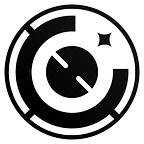Examples of How User Research Informs UX Design Decisions
Anybody who pays for user research must wonder: Is this actually going to make a difference? It’s a legitimate question, considering that most designers can’t articulate why they made certain design decisions.
We’ve worked on many POS design projects. In one particular case, the customer was a petrol station chain from Switzerland. During the discovery phase, we spent 3 days in Zurich doing user research, in order to understand the context and the factors affecting the performance of the POS system.
We observed the POS users on the job and we interviewed them. We even became cashiers ourselves, going the extra mile to understand the product and its challenges.
User research informs POS design principles, but here are some concrete examples of how user research insights determined design decisions.
User Research Informed Design Decisions About the Layout
The layout of a POS design must support user needs on many different levels. The user research taught us about the context of use, as well as the behavioral patterns our users engaged in.
For example, it showed us how cashiers move to interact with the POS and how the context has an impact on movement:
- The POS is positioned at below level;
- The products are almost always to the left of the POS;
- Receipts and cards are always bottom left below the POS;
- Customers are always to the left of the POS;
We made a few design decisions to reduce the amount of hand movements, and to enable the cashiers to bag the products while maintaining eye contact with the customers:
- The buttons that are used most often are placed at the bottom of the screen;
- The order summary is next to where products are scanned;
- Actions performed while products are scanned are primarily to the left;
- Actions performed after bagging are to the right because at this point in time the right hand is free;
Decisions About Interactions Are Supported by User Research Insights
User research revealed a nuanced vision of how pumps are used by cashiers, what types of scenarios are problematic, and the ways in which real life is different from what developers hope for. For example, we learned that:
- Cashiers spend a lot of energy glancing at the petrol pumps outside, to be vigilant against people who might drive off without paying;
- Even though stations can have up to 14 pumps, it is rare that more than 8 are ready to be checked out at a given time;
- Even though pumps can have multiple states, only one action is possible for a pump at any give time;
These concrete details enabled us to make bold design decisions, such as:
- The pump section of the interface is exclusively populated by pumps that are currently in use, and the UI only shows relevant information pertaining to the state the pump is in;
- Pump elements now have per-programmed behavior to make the POS user’s life easier. That is, they provide clues if a pump has been in use for a long time;
These pragmatic design decisions reduce cognitive load on the screen and enable the system to take over some of the tasks that previously occupied the mind of the cashiers. Nobody would have been able to make sound design decisions about these factors without having a real-life understanding of what it is like to be a cashier in a petrol station.
User Research Refuted False Assumptions
The client’s management team requested that we use images for the POS interface. They intended to make it easier for users to find products that cannot be scanned (bread, coffee, cleaning services, fruit).
Real-life user research revealed that images would not be helpful in this circumstance. They would have only made things worse, because:
- Items that are non-scannable mostly look the same (for example all bakery and coffee products look the same);
- Cashiers don’t have a problem with recognizing the button, but rather with recognizing the physical product in front of them;
- The reason cashiers have a difficult time finding items is because they are forced to navigate a complicated tree structure;
- The Pareto principle applies to the sales of non-scannable products;
- Customers tend to buy more than one non-scannable product;
The reality of the POS user experience with non-scannables differs from management’s expectations substantially. Learning this first hand and documenting the insights in a detailed way enabled us to design a new UX paradigm that actually works:
- Not using images creates more space for buttons, hence less navigation;
- The 9 most frequently used product buttons cover about 40% of the transactions, creating a one-tap POS experience;
- The 3 most widely used subcategories cover another 40% of the transactions, creating a two-tap POS experience;
- The navigation is simplified and users can jump across categories, making it easier to check out customers with multiple non-scannable items;
- Verbal labels (words) are much easier to scan and to differentiate;
User Research Significantly Improved the Usability of the POS
Follow-up user testing showed that these design decisions improved the performance of cashiers significantly. Without a detailed understanding of what happens in real life and what the experience of a POS user really is, the new design would not have had such an impact.
Of course, there are also other methods that inform design decisions, such as design benchmarking.
It should come as no surprise that understanding something is a precondition for improving it. These examples show just how counter-intuitive certain features are. User research insights determine very concrete and useful design decisions.
